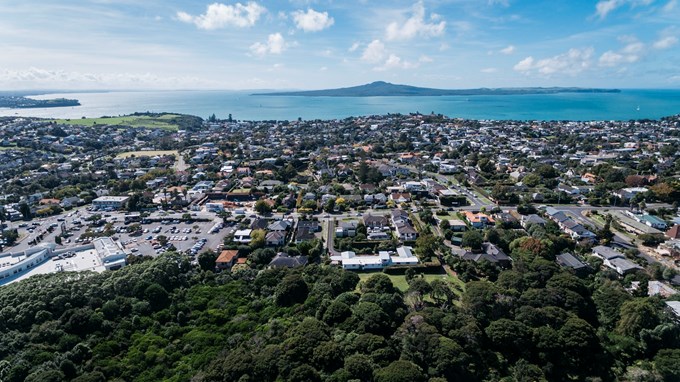Auckland Council’s Planning Committee has finalised its policy directions on the government’s National Policy Statement on Urban Development (NPS-UD) for the limited matters the council can decide, following public consultation.
At its meeting yesterday, the Committee finalised policy directions on the approaches which were publicly consulted on during April and May 2022.
This includes:
-
Walkable catchments around 1200 metres from the edge of the city centre and around 800 metres from the edge of Auckland’s 10 large metropolitan centres and around rapid transit stops, where buildings of six-storeys or more must be enabled (unless a qualifying matter applies).
-
Enabling more apartment and terrace housing around some larger town and local centres with good access to public transport – up to 200 metres around large local and smaller town centres and up to 400 metres around large town centres.
-
The qualifying matters, or exemptions, to limit building heights and density in some areas. This includes the proposed exemptions for special character – inside walkable catchments, its areas with high-quality special character, where 75 percent of individual properties strongly contribute to character values, while outside of walkable catchments it is 66 percent of properties.
Councillor Chris Darby, Planning Committee chair, says there is still work to come, with more details in the council’s proposed plan change that will be considered in August.
“In response to the NPS-UD, we have agreed to a balanced approach to deliver on the government’s strong direction to enable more housing for current and future Aucklanders while ensuring that areas with special character value can be protected.
“The Auckland Unitary Plan already enables capacity for housing well into the future. The proposed changes would see significantly more capacity enabled for housing within walking distances to large urban centres and public transport, greatly exceeding the projected demand for housing over the next 30 years," he says.
“The NPS-UD specifically allows for some exemptions to be proposed to limit building height and density requirements for things important to our city, where there is strong evidence to support it. And, as required by government this evidence will be tested through public submissions, hearings, and review by an Independent Hearings Panel.
“This panel will then consider all public submissions, hold hearings with submitters, and make recommendations back to the council on changes to the Auckland Unitary Plan. If the council rejects a recommendation from this panel, then the final decision is up to the Minister for the Environment to make.
“There is still a long way to go before final changes are made, including an opportunity for people to make a submission in August on all the proposed changes,” says Councillor Darby.
More work to come
The policy directions confirmed today will inform the council’s proposed plan change to the city’s planning rules book – the Auckland Unitary Plan which will be considered on 4 August, ahead being publicly notified for submissions by the 20 August 2022.
Further work is required to prepare the plan change. This includes investigating a qualifying matter for water, wastewater and stormwater infrastructure and transport capacity constraints, and a potential qualifying matter to limit six storey building heights within walkable catchments where they border areas of open space or lower density buildings.
“We also remain concerned about the limits the government has placed on what we can do to support quality urban development in Auckland through its medium density housing requirements.
“We must not lose sight of the fact that it is entirely possible to build quality, well-functioning liveable homes for people without compromising the quality of our built environment.
“We are determined to do all we can to achieve good outcomes within the tight constraints imposed and further work will be done on potential improvements to the design standards in the Auckland Unitary Plan,” says Councillor Darby.
Summary of key policy directions
Walkable catchments
- Walkable catchment distances from the edge of the city centre of 15 minutes walking (around 1,200 metres) and 10 minutes walking (around 800 metres) from the edge of large metropolitan centres and around Auckland’s train and busway stations.
Intensification around suburban centres
- Enable terrace housing and apartments up to 200 metres around large local and smaller town centres with good public transport, or a two and half minute walk, and up to 400 metres around large town centres with good public transport, or a five-minute walk, subject to modifying factors such as topography, barriers like motorways and qualifying matters.
- Enable heights in some neighbourhood centres of five storeys where they are within the area of terrace housing and apartments, subject to qualifying matters.
- No intensification (other than the application of Medium Density Residential Standards) around other smaller local centres and neighbourhood centres.
Qualifying Matters
- Confirmed the existing proposed qualifying matters that will apply in Auckland.
Special character areas – qualifying matter
- Confirmed the approach for special character areas - outside walkable catchments – 66% of individual properties score 5 or 6, and inside walkable catchments 75% of individual properties score a 5 or 6 (high-quality).
- Amend the extent of special character areas to respond to feedback on council’s preliminary response and where they have a significant effect on development capacity within walkable catchments - no new areas will be added.
- Amend special character areas to accommodate greater levels of development while retaining the special character values. Including enabling up to three dwellings per site (via the conversion of a principal dwelling into a maximum of two dwellings and one minor dwelling), providing for a limited range of non-residential activities (such as home occupations, boarding houses, dairies, and restaurants).
Auckland Light Rail Corridor
- Delay implementing the NPS-UD and the Medium Density Residential Standards in the Auckland Light Rail Corridor where the route is unknown until the route and stations are confirmed.


